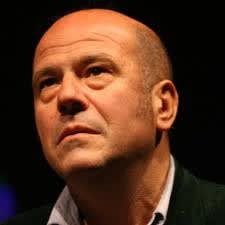Born in Foglianise on December 6, 1954, Nicola De Maria has lived in Turin since he was a little boy. He earned a master's degree in medicine, then continued studying with a specialization in psychiatry, but has never been employed as a doctor because he has always preferred working as an artist. Following a short period of photographic work in 1975, he created a wealth of drawings on writing paper, first in pencil and later in pastel, oil, and watercolour.
With increasing success he began to apply paint directly onto walls and produced small canvas paintings. De Maria found in painting the most appropriate language in which to express himself, and through that medium he entered the lively world of Arte Concettuale in Turin. Thanks to the influence of that artistic movement, and to his broad
foundation in both modern and classic culture, Nicola De Maria was able to develop his characteristically spiritual and lyrical language. Every one of his works is pure colour and poetry.
In 1977, the artist completed his first mural painting in Milan, and in the same year created another mural at the Paris Biennale. De Maria continued to trascend the canvas by pervading the exhibition space with colour techniques used in frescoes by the Italian Masters. During the 1980s, the artist painted several spaces, and exhibited several retrospectives of his oil paintings. During these years, De Maria's works served as a foundation for the exhibitions of
the Transavanguardia group organized by the critic Achille Bonito Oliva. The painter was initially included in this artistic movement, but he soon developed his own direction, producing non-figurative and small-scale works. His art is abstract but full of figurative elements that are not only poetic (such as in Regno dei Fiori, 1983/85) but, most of all, spiritual (La Testa Allegra Di Un Angelo Bello, 1986/87.) The artist seems to transform poetry into painting;
every single work presents the magic frontier of a fairy-tale world. In this vein, De Maria once described himself in an interview as: "one who writes poems with his hands soaked in colors."
In the 1990s, this spirituality led the artist to concentrate on pure abstraction and transformed his works into a sort of prayer that can be represented only through a strong symbolic vocabulary. A vivid chromaticism characterizes his works of this period. De Maria uses colors in a way that reflects his affection for the " Mediterraneanity" of his land, and continues to create landscapes populated by the brave, wise, and luminous elements of the natural world.
However, these subjects are evoked rather than depicted, as the artist compels the observer to become immersed in the fabulous, spiritual, and poetic world of its creator.
